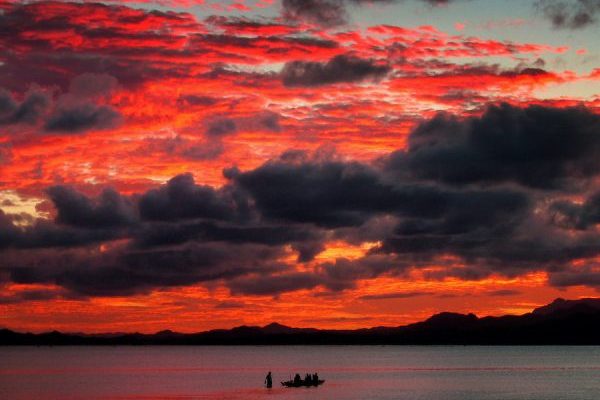Tough choices on COVID-19 in the Pacific

In the Pacific islands region, the COVID-19 story is one of contrasts. There have been few confirmed cases of infection. Many Pacific island countries are COVID-19-free thanks to the swift and decisive actions of governments in closing borders early and keeping them firmly shut.
But the danger is not over yet so there is no room for complacency. Significant risk factors are still present in Pacific island countries, including a prevalence of chronic disease and weak healthcare systems despite recent international efforts to provide support by way of funding and equipment.
The global shutdown of travel and tourism has had major economic impacts on the Pacific. A number of Pacific island countries such as Cook Islands, Fiji and Vanuatu rely heavily on tourism. In Vanuatu, the tourism sector is the largest provider of employment outside the public sector.
A recent survey conducted by the Vanuatu Chamber of Commerce reported that 70 per cent of business owners in the tourism sector have laid off staff. The IMF’s Pacific tourism tracker records a 99.1 per cent fall in tourist arrivals in Fiji this May compared to May 2019.
In small economies, these disruptions have the potential to indirectly affect a significant proportion of the population beyond those in the direct firing line. In urban and peri-urban areas, something as small as one member of the family no longer receiving meals at their workplace can put a severe strain on already constrained household resources.
While a number of governments have introduced stimulus and support packages to tackle the economic hardships facing their communities, ensuring their longer-term sustainability will be another difficult challenge. There are social and customary support structures in place among families and kinship groups, but these are becoming increasingly strained. Government-funded social protection systems are either non-existent or extremely limited.
Tourism may look very different in the Pacific post-COVID-19. It is unlikely that all businesses will survive. There are some opportunities to promote domestic tourism, but as economic activity contracts overall, the current discounts on tourism are unlikely to be sustainable. Fiji has been promoting a ‘Bula Bubble’ model in an attempt to kickstart an early recovery.
It is unsurprising that the push for Pacific island countries to be included in an expanded trans-Tasman bubble is gaining momentum. The governments of Australia and New Zealand have so far resisted calls that they include Pacific island governments or even the Pacific Islands Forum Secretariat in the planning that is currently ongoing between stakeholders of relevant agencies and industry groups.
In New Zealand the conversation has been taken by some in the direction of establishing an NZ–Pacific ‘bubble’, eventually adding Australia once its containment efforts have minimised transmissions. But this proposal does not include Melanesian COVID-19-free countries such as Vanuatu and Solomon Islands.
This is a huge missed opportunity for Australia to shift gears on its Pacific step-up and to move it from something that Australia does for or to the Pacific to something that is done with the Pacific.
Recently, the Australian High Commissioner to Fiji talked of a Pacific bubble in terms of something that could be ‘applied to’ Fiji once all the hard work had been done by Australia and New Zealand. This level of paternalism and condescension should be a thing of the past.
The issues in question — the opening and closing of borders, biosecurity management and safeguarding public health — are ones that pertain to the exercise of sovereign powers. The time to be discussing the opportunities, risks and modalities with Pacific leaders is now.
For Pacific island countries, there are numerous factors to consider in engaging with a Pacific bubble. At the political and community levels, people are prepared to wear a degree of economic pain in order to protect vulnerable populations and safeguard health. If and when the time comes that this is no longer sustainable, there will be major issues concerning border control, biosecurity and public health management.
Managing community anxiety about reopening borders will also be paramount. This COVID-19 anxiety is evident in regard to the repatriation of citizens and residents, and is unlikely to subside when countries begin reintroducing tourists.
The sudden blow to tourism in the Pacific will have lasting impacts that will take a long time to overcome. While economic diversification may be attractive, achieving this is not an easy task even at the best of times. In Cook Islands, the government has indicated that they want to progress exploration of seabed mining to create a revenue stream other than that provided by tourism. This continues to be controversial but is an indication of the tough economic and political decisions that Pacific island leaders are facing.
The balance between protecting the lives of Pacific island people and safeguarding livelihoods and economies in the region makes for a serious challenge for the region’s policymakers.
This article was published by the East Asia Forum.
Dr Tess Newton Cain is an independent researcher and consultant with over 20 years of experience in governance, policy and political analysis of the Pacific island region. She is a former Lecturer in Law at the University of the South Pacific and is a dual citizen of Vanuatu, where she lived from 1997 to 2016.














